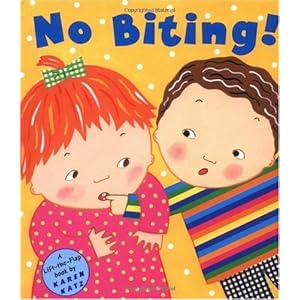I have a just about 3 year old and a 2 and a half year old that are trying to be potty trained right now. This is a experience I really did not enjoy with my first two children!!!! But it has to be done.
One has to remember that every child learns at their own pace and just cause they are slower with one thing in life doesn't make them slow at everything else. When choosing to start potty training a child you must first and for most look and assess them to see if they are truly ready to try this task and experience. From some children, just like adults, when they fail at something it can really devastate them. So if they are not ready to start learning then don't push them.
Once you get the aspects and rules/guide lines taught to your child, please, please, please remember that accidents will happen even when they have accomplished the basics of going on the potty. When accidents do happen, don't go off the deep end and lose it on the child, because this can lead to set backs and self esteem problems too. Just because they are 2, 3, 4 years old, does not mean that when you yell or get mad at them that it doesn't hurt their feelings, they are humans too.
ABC of potty training
- A -- Assess your child's readiness
- B -- Buy the right equipment
- C -- Create a routine
- D -- Ditch the diaper
- E -- Explain the process
- F -- Foster independence
- G -- Grab some training pants
- H -- Handle setbacks gracefully
- I -- Introduce night training
- J -- Jump for joy -- you're done!
Most parents eagerly anticipate potty training as a milestone in their child's development -- if for no other reason than that it means an end to changing diapers. But few moms and dads are prepared for how long it can take. Yes, some children get it within a few days. But many more take several months. You and your child have a better chance of success if you know the basics of training and can make the process clear to your child.
A -- Assess your child's readiness
Most people begin training when their child is about two, but some kids may not be ready until well into their fourth year. Watch for the right signs, such as imitating others' bathroom habits, and don't pressure your child to start before he's ready. It's worth running through a basic checklist to see if he is ready.
B -- Buy the right equipment
First and foremost, this means investing in a child-sized potty or a special seat to attach to your regular toilet. Whichever you choose, make sure your child can stabilize himself with his feet so he can push when he's having a bowel movement. You may also want to pick up an explanatory picture book or video for your child to help him get interested in training.
C -- Create a routine
Sit your child fully clothed on the potty seat once a day -- after breakfast, before his bath, or whenever else he's likely to have a bowel movement . This allows him to get used to the potty and accept it as part of his routine. If he doesn't want to sit on it, that's okay. Never restrain him or physically force him to sit there. And especially don't push the issue if he seems scared.
In both cases, it's better to put the potty away, or at least aside, for a few weeks or a month and then try again. If he's willing to sit there, fine. But at this stage, don't even try to explain why he should use it; you just want him to get used to the thing. Make sure it's always in a convenient place -- since it's portable, your child's potty can be used in the garden or the playroom.
In both cases, it's better to put the potty away, or at least aside, for a few weeks or a month and then try again. If he's willing to sit there, fine. But at this stage, don't even try to explain why he should use it; you just want him to get used to the thing. Make sure it's always in a convenient place -- since it's portable, your child's potty can be used in the garden or the playroom.
D -- Ditch the diaper
Sit your child on the potty seat without a diaper. Again, let him get used to what it feels like to sit there this way. At this point you can start explaining that this is what Mommy and Daddy (and any older siblings) do every day. That is, undressing before you sit down to go to the bathroom is the grownup thing to do.
If he gets the idea and produces something, that's fine. But don't push him to perform. Again, wait until he's ready and demonstrates a clear interest in using the toilet on his own.
If he gets the idea and produces something, that's fine. But don't push him to perform. Again, wait until he's ready and demonstrates a clear interest in using the toilet on his own.
E -- Explain the process
It may help to show your child where his bowel movements go. The next time he goes in his diaper, take him to his potty, sit him down, and empty the diaper beneath him into the bowl. This will help him make the connection between sitting and producing. After you've emptied his potty into the big toilet, let him flush it if he wants to (but don't make him do it if he's scared) so he can see where it goes. Teach him to dress himself and wash his hands when he's done.
F -- Foster independence
Encourage your child to use his potty whenever he feels the urge to go. But make sure he knows that he can tell you, too, and that you'll take him to the bathroom whenever he wants you to. If you can, let him run around sometimes without a diaper (or any clothing below the waist), with the potty nearby. Tell him he can use it whenever he wants to and remind him occasionally that it's there if he needs it.
G -- Grab some training pants
H -- Handle setbacks gracefully
Virtually every child will have several accidents before being completely trained during the day and at night. Don't get angry or punish your child; after all, it's only recently that his muscles have developed sufficiently to allow him to hold his bladder and rectum closed at all. Mastering the process will take time. When he has an accident, calmly clean it up and suggest that next time he try using his potty instead.
I -- Introduce night training
Even when your child is consistently clean and dry all day, it may take him several more months or years to master night training, so don't throw away his diapers just yet. At this age, his body is still too immature to reliably wake him up in the middle of the night just to go to the bathroom. You can help cut down on wet nights by not letting him drink too much before bedtime and telling him that if he does wake up in the middle of the night he can call to you to help him get to the potty. You can also try leaving his potty near the bed in case he wants to use it.
J -- Jump for joy -- you're done!
Believe it or not, when your child is ready to learn this new grown-up skill, he will. And if you wait until he's really ready to start, the process shouldn't be too painful for either of you. He will eventually be trained, and you won't have to think about it again -- at least, not until the next baby...
Now many of these steps can be helpful with a child in your own home (IE. letting them run around naked or no clothing from waist down) it can't always be the way out in public or in a daycare with other children around. Children will be children and ask alot of questions!!!!
Every child works at their own pace, like I mentioned above. If after trying for a number of weeks and you are unsuccessful, maybe try lighting up a bit for a while and try again in 2 to 3 weeks. It shouldn't be stressful on the child and if so then they really wont even try. If problems continue for lengths of time and no success is made, try a reward chart, treat, or song. So every time they do use the potty they get one of these things as a reward for doing so. Incentives are always exciting to children.
Just remember whether your child accomplishes the task of using the potty in 2 days or a year, its an exciting step of independence for them and you too!






